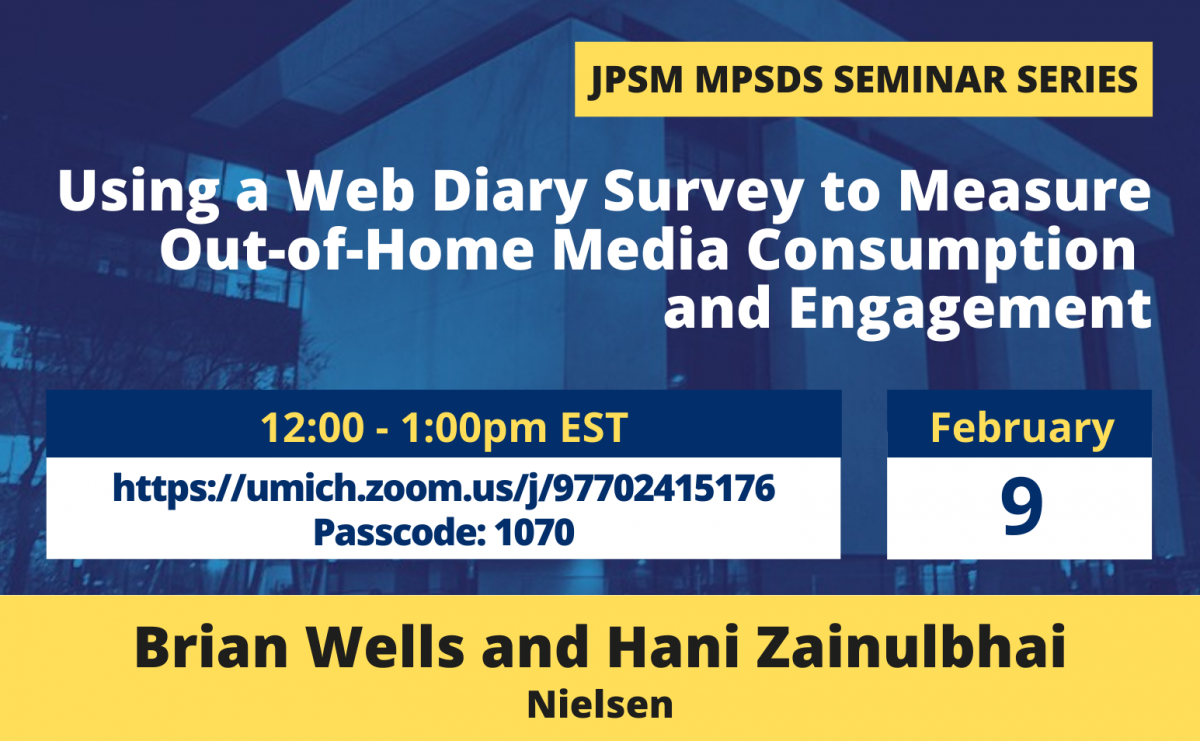Brian Wells & Hani Zainulbhai - Using a Web Diary Survey to Measure Out-of-Home Media Consumption and Engagement
Location:
Zoom: 977 0241 5176 Code: 1070
Date:
February 9, 2022 - 12:00pm to 1:00pm

Brian M. Wells is a Senior Data Scientist at Nielsen where he works on a variety of quantitative projects to evaluate, improve, and expand Nielsen panels. Previously he served as the Data Quality and Survey Methodology Manager for the California Health Interview Survey (CHIS) where he evaluated the need for and implemented a new data collection methodology. Brian received his PhD in Survey Methodology from the University of Michigan.
Hani Zainulbhai is a Senior Data Scientist at Nielsen and a 2018 MPSM graduate. At Nielsen, she has been involved in developing alternative recruitment methods for the TV audience measurement panel.
Using a Web Diary Survey to Measure Out-of-Home Media Consumption and Engagement
Dimensions of out-of-home (OOH) media measurement rely on human input and cannot be fully captured through passive data collection via smart devices or portable meters. To better understand OOH TV consumption, we designed a web-based diary survey to capture the various components of OOH TV consumption while trying to minimize recall bias, especially for brief, unanticipated viewings. The study consisted of two parts: a Recruitment phase and a Diary phase. During the Recruitment phase, selected panelists from a nationally representative sample completed a short survey and were asked to participate in the 7-day diary. Those who agreed were enrolled in the Diary and were asked to complete a once-daily diary, logging all their OOH activity and TV consumption. The surveys were conducted over four weeks from mid-October to mid-November 2021, with each week having an independent and representative sample covering a different 7-day period. This presentation will provide an overview of the methodology and process used to administer the Recruitment and Diary surveys, including sample design, recruitment procedures, web-based diary survey design, and participation and response rates for each survey. In addition, we will discuss the results of a questionnaire experiment exploring differences between the concepts of attention to and engagement with media. A random half-sample was assigned questions about either “attention” or “engagement” to each program viewed. Within each half-sample, we also randomly assigned each respondent to an ascending or a descending response order condition to observe if there is any primacy effect due to collection in a self-administered mode. Preliminary results show differences in the distributions for attention and engagement implying some differentiation in how respondents perceive these two measures. In addition, the direction of the response order seems to alter the response distribution for attention but not for engagement.
